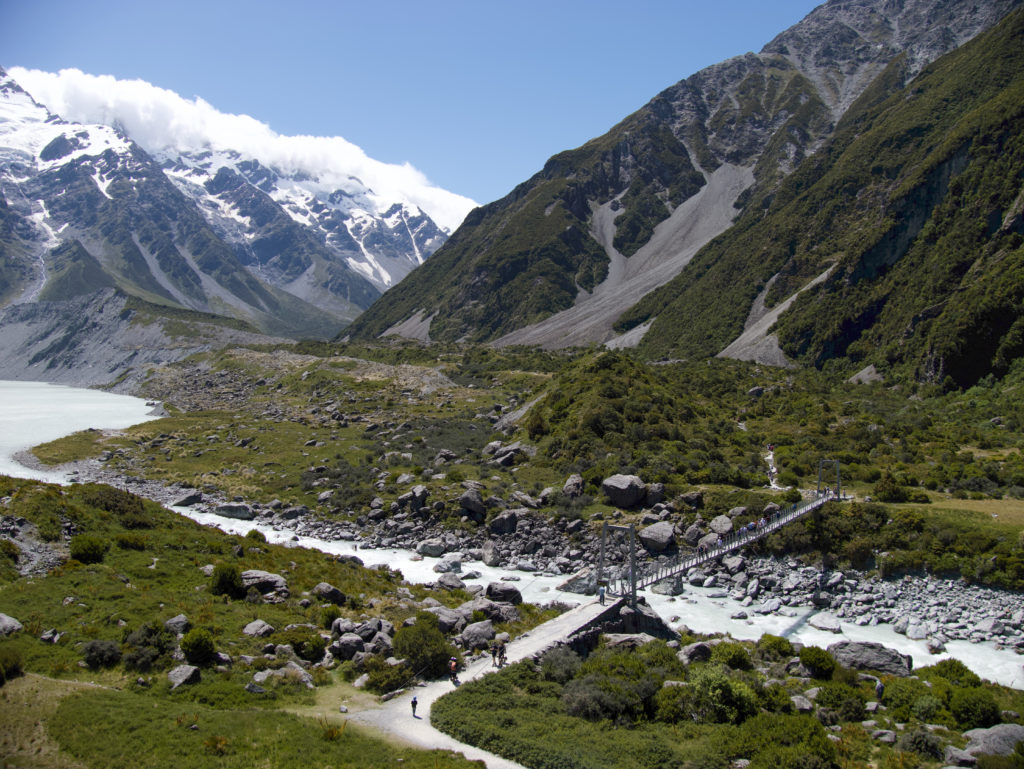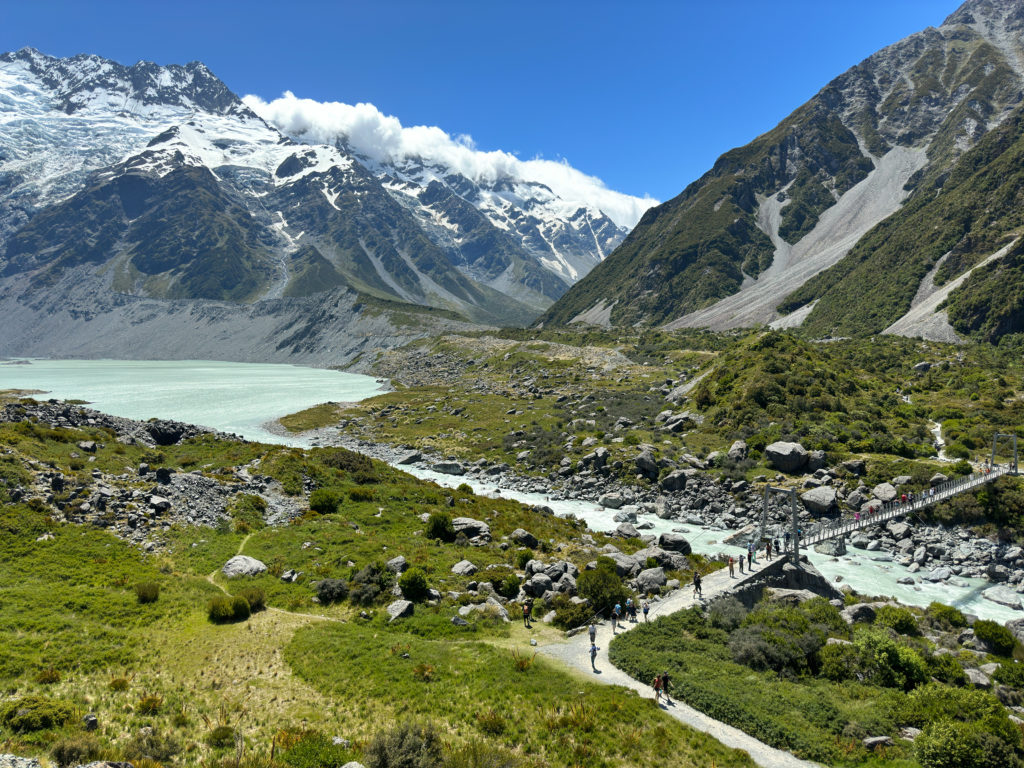After the recent pandemic-tainted years, the value of time away from home has never been clearer. And for many photo or video professionals, a vacation is often a rare chance to capture some fresh moving or still images, for personal or semi-professional purposes. Whether you’re travelling to take videos or merely grabbing a few incidental shots, most of us will want to capture a few moments in decent quality.

If you’re just heading out for the day or the weekend, it’s easy enough — throw whatever photographic and video gear you might need in the back of a car. But what if you’re going further, for longer? What if you’re going to be traveling with family? Suddenly, you’ll have to get selective, and the camera in your phone, the camera that’s always in your pocket, becomes pretty tempting. I’ll still use a dedicated camera for client work, because I need control, reliability and the best image possible, but for my own images, things are shifting.

Today, more people than ever are capturing photos and videos, but fewer people than ever are using dedicated cameras to do so. Similarly, more people are consuming photos and videos, but mostly on smaller devices than ever before, where image quality matters less. So what should you do? There are a ton of variables here, including (I’m serious) if you have an Apple Vision Pro or not. This is not clickbait, it’s not an ad for any specific kind of hardware — it’s a guide so you can make your own decision. Let’s dig in with some questions.
Why are you shooting anyway?
In our personal lives, a couple of decades ago, if we were taking photos or shooting videos, we were probably the only people in the room doing so. Cameras were rare, camcorders even rarer, and every moment of our lives was simply not documented with anything like the detail or regularity it is today. We had slide nights, and photo books, but otherwise, we just had our real selves.
Because many people are now exposed to so many images, each photo has, to most people, less value than it once did. Of course, a special video of a now-passed family member is irreplaceable, and personal family photos will always have value that grows with time. But viewers have been spoiled. It’s hard to impress your friends with your great shot of a sunrise, because they’ve seen a thousand great sunrise pics this week. The world doesn’t need more great photos — we’re drowning in them.
I hope you want to take great photos, timelapses or video clips simply because you love it; there aren’t enough eyeballs to consume all these images.
What are you willing to carry?
In the past, I’ve certainly taken more gear that I would today. When the original Blackmagic Cinema Camera was the best video camera I could buy, I lugged it up mountains and elsewhere around Japan, capturing some very nice footage that few other people ever paid attention to.
In 2022, I took my Lumix GH6 to New Zealand, along with a 360° camera and an iPhone 14 Pro Max, to try to capture the amazing landscape as best I could. At the time, the iPhone’s videos couldn’t come close to the monster 6K 4:3 open gate video from the GH6, though the iPhone 15 Pro and Pro Max’s Log videos can get a lot closer if 4K is sufficient. And despite the lower still resolution, the GH6’s still images look better (to me) before processing. The iPhone has the edge in raw resolution, but the default look is still a bit too sharp and contrasty for my tastes.
Although I’ve used this footage professionally and I don’t regret carrying “real” cameras, they weren’t light, and I felt the weight. Just managing to fit all the battery-powered equipment in my carry-on luggage was a non-trivial game of Tetris. Is there a lighter camera out there?
What about a compact travel camera?
Unfortunately this market segment has significantly declined, and today’s travel cameras are a significant step down from today’s pro cameras in terms of sensor size and image quality. As I’m used to the GH6, I don’t want to go backwards by using something worse — and if you have a full-frame camera already, your personal quality bar may already be set higher than mine. Action cameras are great for sports and for timelapses, and they’re certainly not heavy, but their image quality doesn’t surpass a modern phone.
Travel cameras, usually with a small built-in zoom lens, do offer reach, but don’t usually compete with mirrorless in image quality. Matching your current professional lens system makes sense, and I’m lucky being in the Micro Four-Thirds camp from a weight point of view. However, purchasing a smaller camera body to match my existing lenses would be a large investment for a relatively small weight saving.
Another issue with many cameras sitting just under the “pro” category is that they tend not to be weather sealed, and that can be a problem. On a holiday in Taiwan, I took a camera with a non-weather-sealed kit lens (as I thought the reach would be useful) but in the regular drizzle, I barely got to use the camera at all. Professional bodies and zooms tend to be weather sealed, but not all primes are. Beware.
Finally, then: is your phone good enough?
At video editing conferences over the last several years, I’ve often been the only person to bring a dedicated video camera. To be fair, not all editors are also shooters, but I was surprised to hear from colleagues, even pre-pandemic, that for them, a phone was good enough for family photos. To me, a phone was only good enough for photos viewed on a phone, but sub-par for images viewed on a large screen. Phones have improved a lot, but beware of the default settings, which sometimes remove too much noise and add too much sharpening.
The shift of the iPhone 14 Pro Max’s main sensor to 48MP (and the expected upgrade of the 0.5x sensor to 48MP on the iPhone 16 Pro) has absolutely made a difference to how good photos look on a big screen, but detail is not the only reason to carry more than a phone. The core reasons for using a dedicated camera even for holiday snaps remain: changeable and better lenses to let you cope with more extreme situations, swappable batteries and storage, real depth of field, and a cleaner, less processed image. If you can live with the lens selection, everything else can be dealt with.
A few potential solutions
- If you can’t live with the quality limitations of the built-in Camera app, use third-party apps (like Halide and Kino) to shoot RAW photos and Log videos, avoiding overprocessing.
- To manage storage, take a pair of SSDs, offload your images each night to both drives, and delete when done. With USB-C on board, you don’t even need a computer to do this.
- If you find yourself running out of power, pack an external battery. USB-C batteries can recharge most modern devices and make you popular with your travel companions too.
But if you can’t give up the image quality of your professional mirrorless body and its super-shallow depth-of-field, don’t. Maybe you don’t need to buy another body for your current system either — leave your heavy zooms at home, and take a nice prime instead. Walk with your feet, embrace the constraints, and use both devices for what they’re best at.
On my next overseas trip later this year (see you at the Final Cut Pro Creative Summit?) I will need to shoot professional video footage in low-ish light, and a phone alone won’t quite do the job. As a compromise, I’ll be taking my Lumix GH6 with just a 15mm f1.7 Leica prime (943g or 33 ounces), significantly lighter than the same body with my Olympus 12-40 f2.8 zoom (1259g or 44 ounces), and taking up a lot less space.
My GH6 can capture shallow DOF interviews plus clean wide-angle shots in any light if it’s not raining, and my iPhone can handle anything else — panoramas, Spatial Video, ultra-wide angles, selfies, and quick captures when the camera is in a bag.
Why does the Apple Vision Pro matter?
It’s simple — if you don’t have an Apple Vision Pro, you probably don’t have a device which can actually reveal all the pixels in your images or your videos. TVs aren’t going to go past 4K for some time and computer screens have hit the same barriers. Some 6K displays do exist, but they’ve all been more expensive than the Apple Vision Pro — which clearly isn’t cheap — and none of them can present an image anywhere near the apparent size that a headset can. Image quality on a phone is very good these days, but the Apple Vision Pro can show me its flaws, so I’ll still be taking a dedicated camera with me. This will be the case even if the iPhone 16 Pro has a 48MP 0.5x lens (as predicted) because resolution isn’t everything. But every year, as the compromises get smaller, the equation shifts just a little further towards just taking a phone.
Conclusion
Quality matters both more and less than it once did. Because of the quantity of photos we see, fewer people care about quality, but those who do care have better displays than ever to appreciate them. Image quality is still important to many people — including me, and if you’re a video professional, likely you too. So don’t compromise on the look, but also don’t break your back if a client isn’t paying you to capture their images. But it’s still worth taking the best photos you can, with whatever device you use. Eventually, when you do get an Apple Vision Pro 3 or 4 down the line, you’ll really be able to appreciate all those lovely pixels you captured, all those years ago.

